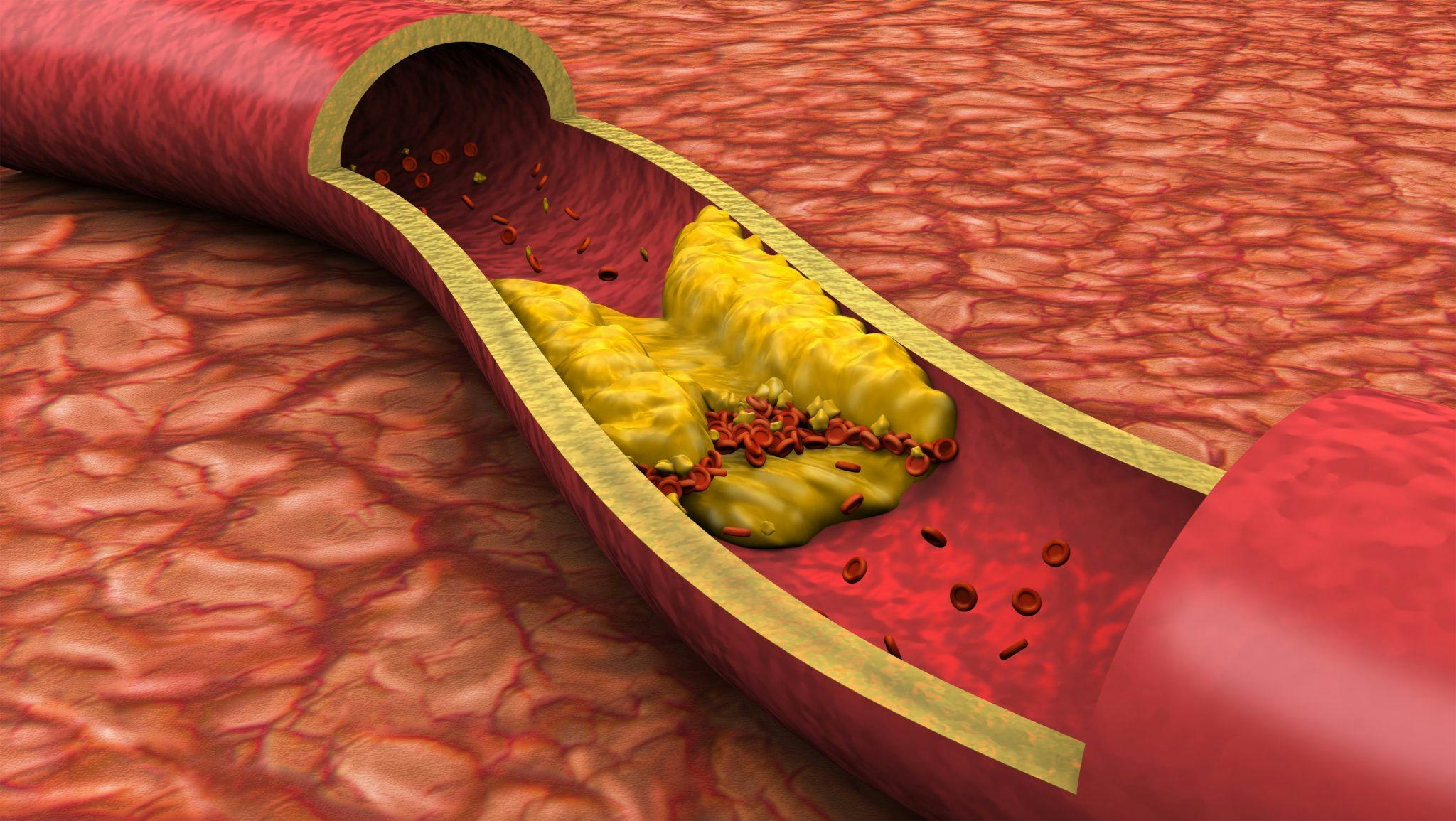Cholesterol is a waxy substance that travels through the blood via proteins (called lipoproteins). It’s made by the body to carry out important tasks like hormone production and food digestion. Cholesterol is also found in many common foods.
There are different kinds of these lipoproteins, some are referred to as “good” and others as “bad”—bad cholesterol can have a major effect on heart health.
Cholesterol Types and Related Fats
When doctors check for cholesterol in the body, they’ll generally tabulate four specific measures:
- LDL cholesterol: Short for low-density lipoprotein, LDL is considered “bad” cholesterol because high levels of it can lead to plaque buildup in the arteries, which can in turn lead to heart disease and stroke. LDL cholesterol makes up the majority of the body’s cholesterol.
- HDL cholesterol: Short for high-density lipoprotein, HDL is the “good” cholesterol—higher levels can reduce the risk of heart disease and stroke. HDL cholesterol absorbs cholesterol and sends it back to the liver, which flushes it through the body.
- Triglycerides: A type of fat in the bloodstream that the body uses for energy. If high levels of triglycerides are combined with low HDL cholesterol or high LDL cholesterol, it can increase heart attack and stroke risk.
- Total cholesterol: A total measure of the cholesterol in your blood, using LDL, HDL and triglycerides.
Knowing Risk and Cholesterol Checks
A simple blood test, called a lipid profile, can be done to check cholesterol levels. It measures several kinds of total cholesterol and individual parts, including triglycerides. Certain other blood tests only check for total and HDL cholesterol.
These checks are vital, in part because there are no symptoms or outward signs of high LDL cholesterol. In general, frequency with which you should be monitored for cholesterol levels goes like this:
- Every 5 years: For adults 20 years or older who have not been diagnosed with heart disease.
- More often: For certain people with specific risk factors—your doctor will discuss these with you.
- Childhood: Children and adolescents should have cholesterol checked at least once between ages 9 and 11, and again between ages 17 and 21.
Risk Factors
There are a few broad risk factor areas that increase your chances of having high cholesterol:
- Conditions: Diabetes mellitus can cause sugars to build up in the blood, which can impact cholesterol.
- Behaviors: Behaviors like an unhealthy diet (one too high in saturated fats, trans fats and cholesterol), lack of physical activity and obesity can increase high cholesterol risk. Obesity in particular is linked to higher triglycerides, higher LDL cholesterol levels and lower HDL cholesterol levels.
- Genetics: Genetic factors likely play a role in high cholesterol, heart disease and other related conditions. It’s also likely that people with a family history of high cholesterol share common environments and other risk factors. Factors like age, sex (LDL rises quicker in women than men, but men have lower HDL cholesterol than women) and ethnicity can also play a role.
Prevention and Management
Regardless of your age or other risk factors, you can take steps to keep cholesterol in the right range and prevent or manage your levels. Here are a few general areas to keep in mind:
- Habits: A healthy diet, proper weight, physical activity and lack of smoking or heavy alcohol use can go a long way.
- Other conditions: Have your cholesterol checked regularly if you’re at risk, and manage any diabetes symptoms you may have. Always be sure to follow all doctor directions, including medications for cholesterol, heart disease or diabetes.
- Medication: Certain people may benefit from medication to help lower cholesterol, including people who have had a heart attack or stroke in the past or who have LDL levels above certain thresholds at certain ages. You can discuss this option with your doctor.
If you’re worried about your cholesterol levels or looking for ways to improve it, speak to your doctor about your options.
Our providers take time to listen and communicate clearly with each patient, and our professional and courteous staff provides quality, personalized care for all of our patients’ general health and medical needs. We specialize in weight control, depression management, skin care, hormone replacement, cardiac conditions and cholesterol management. We strive to provide our patients and their families with quality healthcare services and respect their right to participate in all treatment decisions.
Sources:
“Cholesterol.” Centers for Disease Control and Prevention. https://www.cdc.gov/cholesterol/about.htm
“HDL (Good), LDL (Bad) Cholesterol and Triglycerides.” American Heart Association. http://www.heart.org/HEARTORG/Conditions/Cholesterol/HDLLDLTriglycerides/HDL-Good-LDL-Bad-Cholesterol-and-Triglycerides_UCM_305561_Article.jsp






